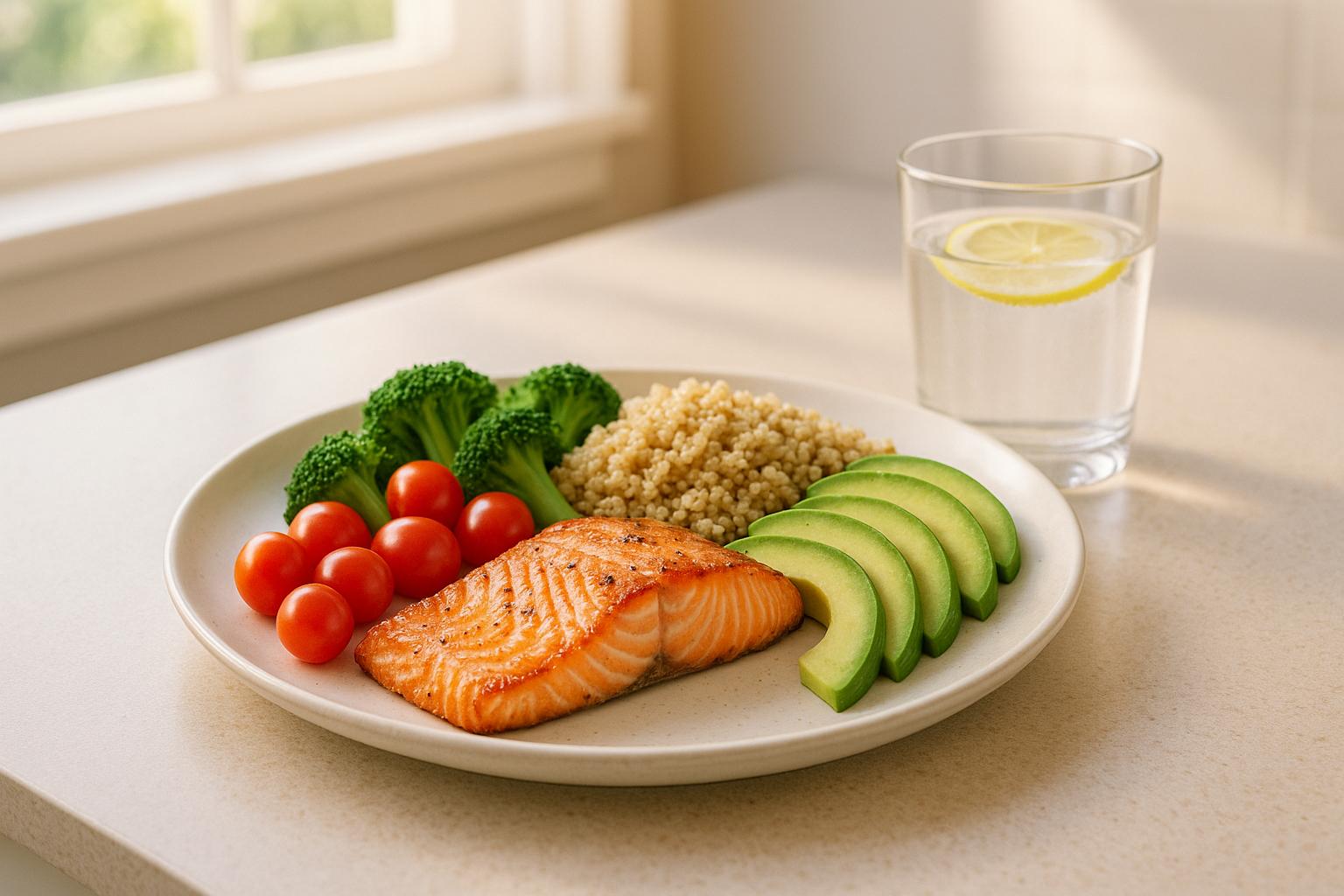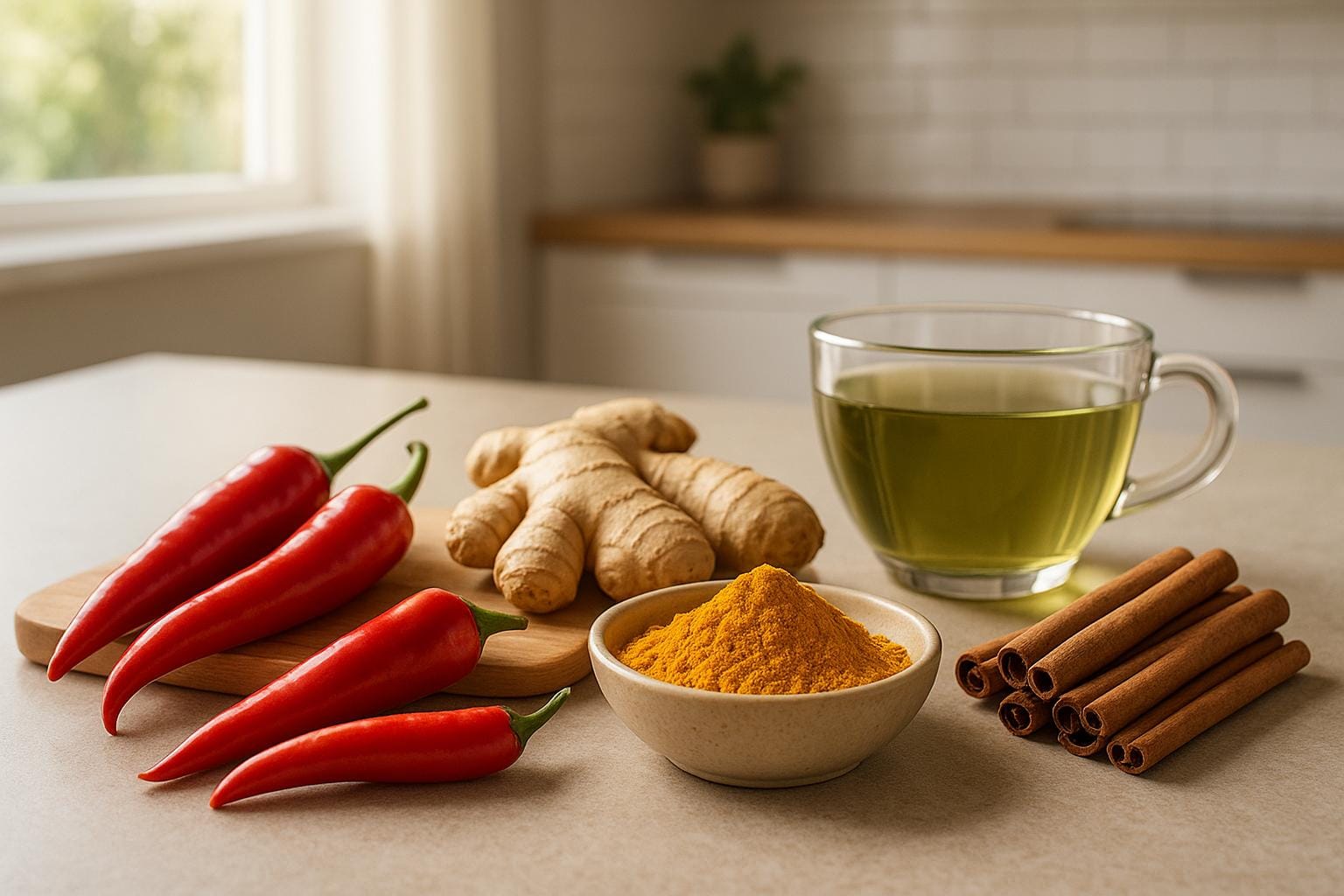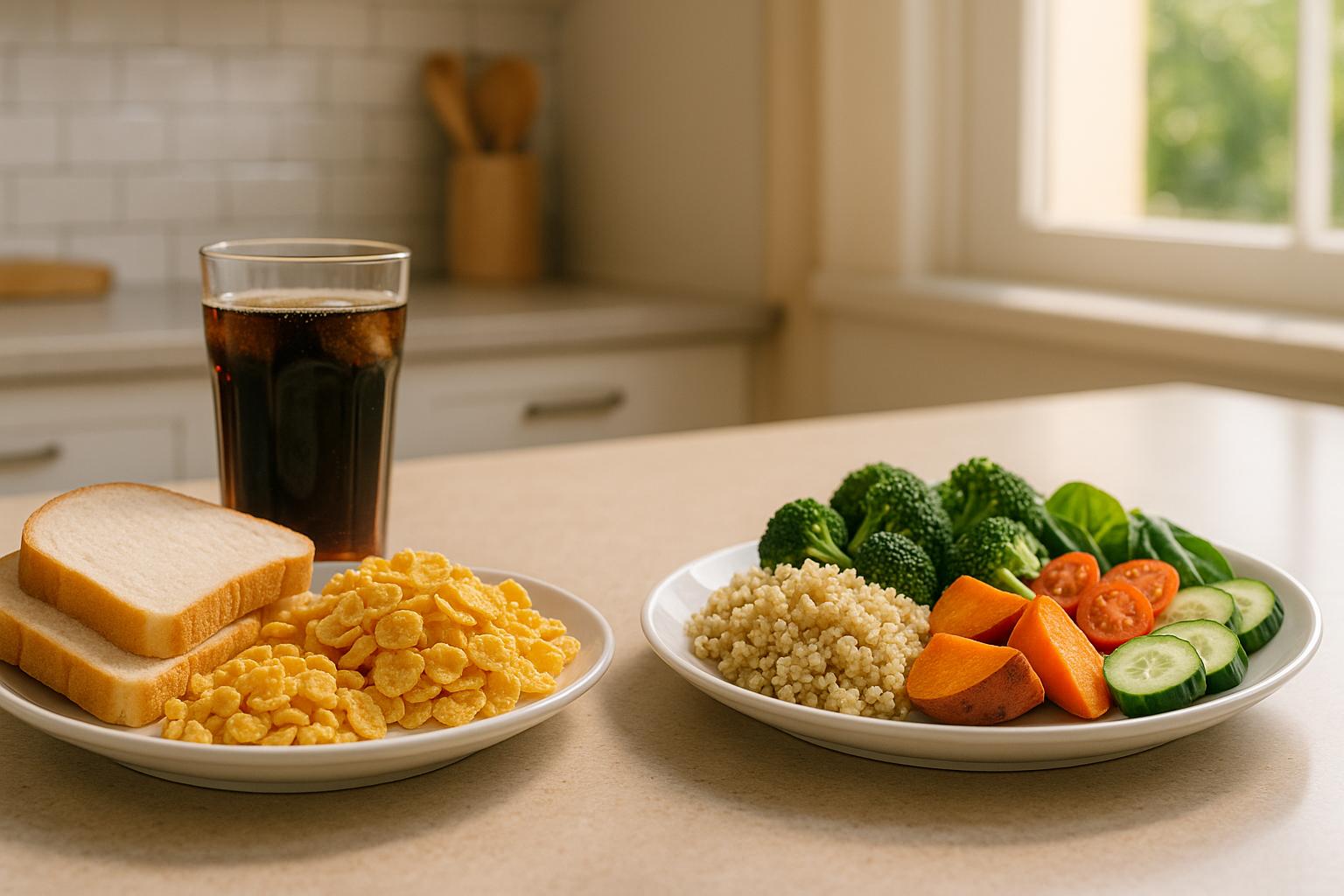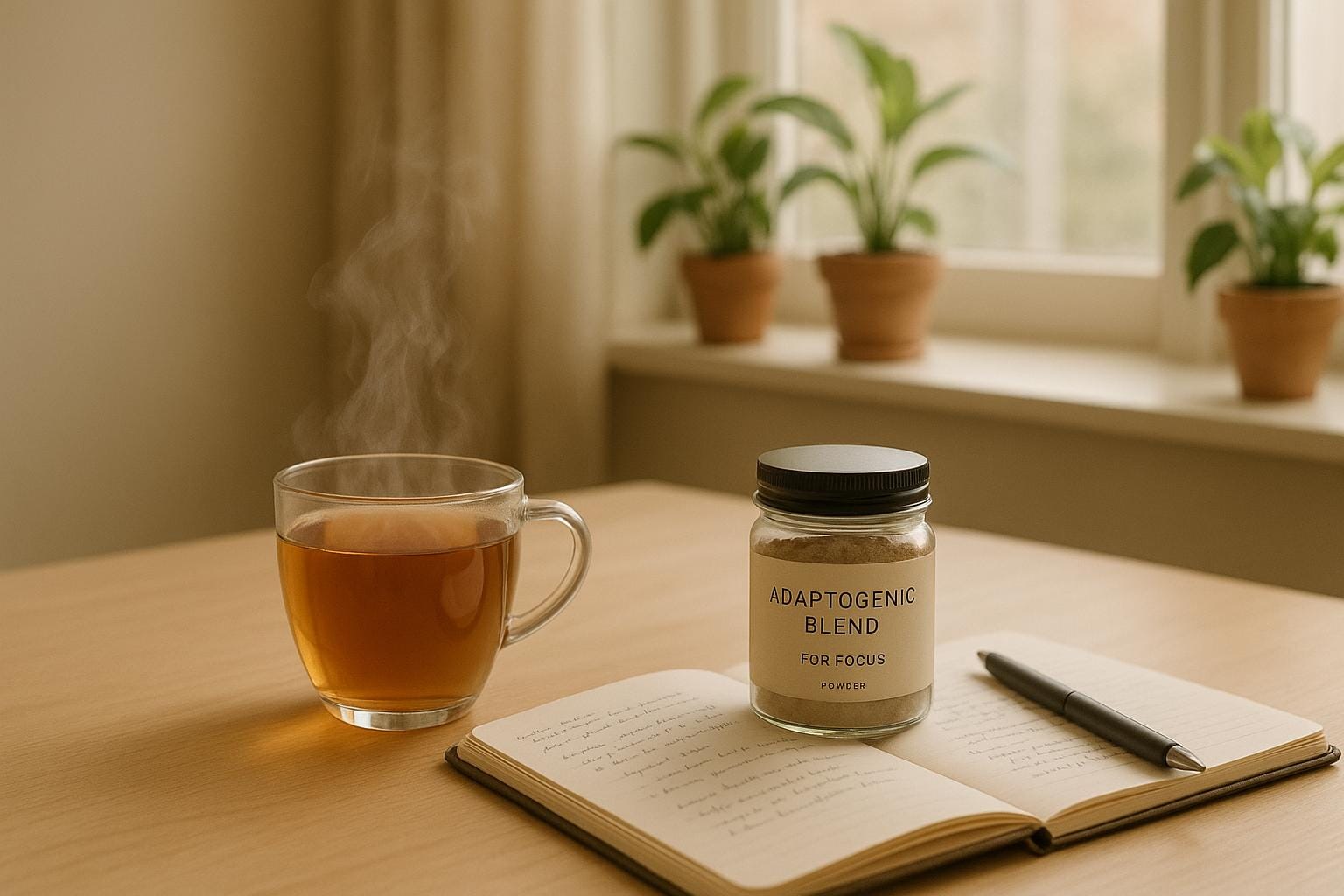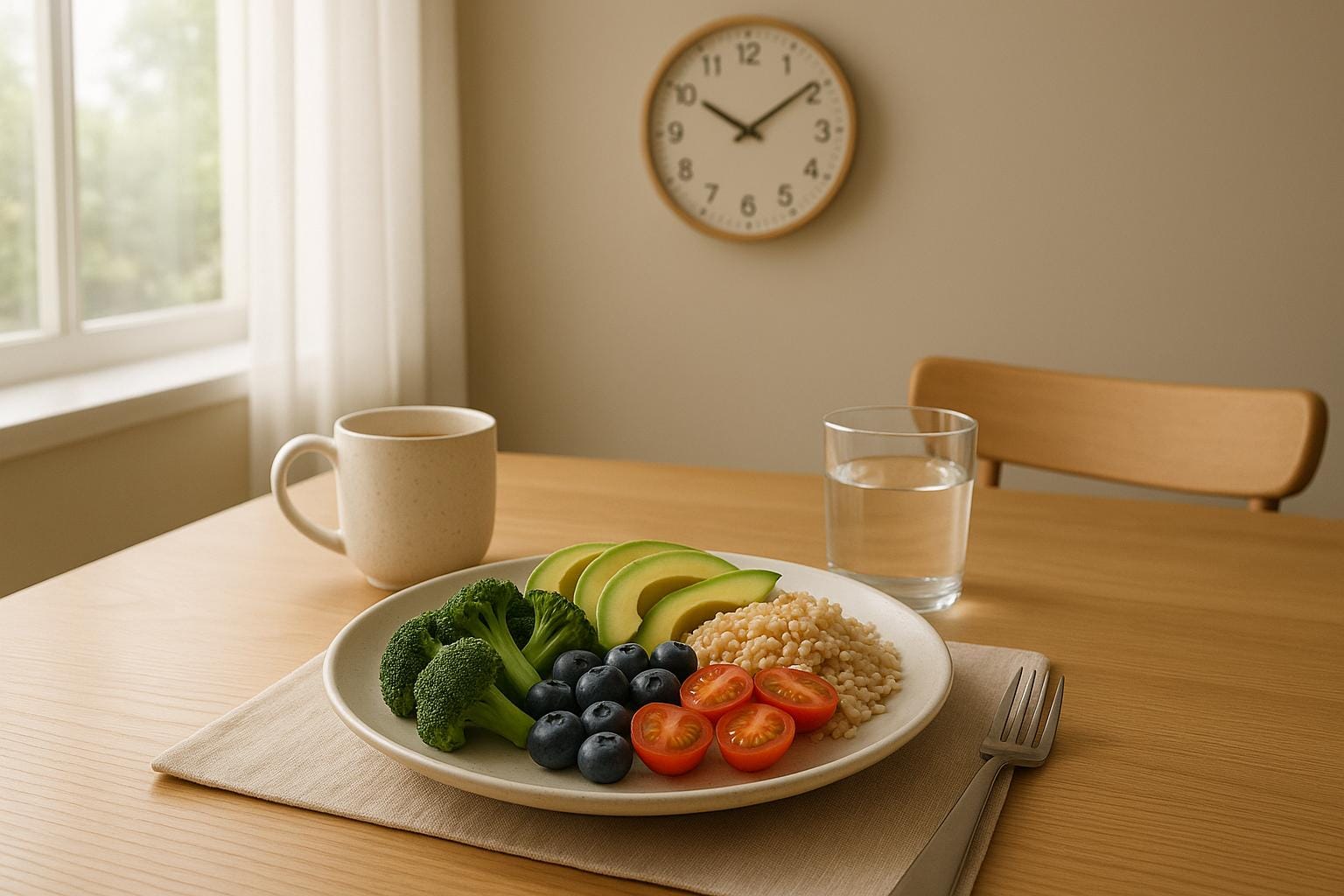As you age, your body becomes less efficient at processing protein, making it crucial to adjust your intake after 50. Protein helps maintain muscle mass, supports recovery, boosts immunity, and promotes overall health. Experts recommend 1.2 to 1.6 grams of protein per kilogram of body weight daily for adults over 50, which is nearly double the federal guideline.
Key Takeaways:
- Why It Matters: Muscle loss accelerates after 50, with adults losing 4–6 pounds of muscle every decade without intervention.
- Daily Target: Calculate your protein needs by multiplying your weight in kilograms by 1.2–1.6. For example, a 165-pound person (75 kg) should aim for 90–120 grams daily.
- Timing: Spread protein evenly across meals, aiming for about 30 grams per meal to maximize muscle protein synthesis.
- Sources: Include both animal (chicken, fish, eggs) and plant-based proteins (lentils, tofu, nuts) to meet your goals.
Combining regular strength training with proper protein intake is key to staying strong and independent as you age.
Eat More Protein if over Age 50 - Here’s How Much & Why
Daily Protein Requirements for Adults Over 50
As we age, protein becomes increasingly important for maintaining muscle mass, strength, and overall health. Experts now suggest that adults over 50 aim for 1.2 to 1.6 grams of protein per kilogram of body weight daily - a notable increase from the federal guideline of 0.8 grams per kilogram, which is designed only to prevent deficiency.
For instance, if you weigh 165 pounds (75 kg), your daily protein target should be between 90 and 120 grams. To calculate your own needs, first convert your weight from pounds to kilograms by dividing by 2.2. Then, multiply that number by the recommended range. Here's an example for a 180-pound (82 kg) individual:
- 82 kg × 1.2 = 98 grams (minimum daily requirement)
- 82 kg × 1.6 = 131 grams (optimal daily intake)
It's not just about how much protein you consume - it’s also about when you consume it. Research indicates that spreading protein intake evenly across meals is particularly beneficial for those over 50. Aiming for about 0.4 grams of protein per kilogram of body weight per meal - or roughly 30 grams of protein per meal for a 165-pound person - helps ensure a steady supply of amino acids to support muscle repair and growth.
What Affects Your Protein Needs
Your specific protein requirements can vary depending on several factors:
- Activity Level: If you're sedentary, you might get by with the lower end of the range. However, regular exercise - especially strength training or endurance activities - raises your protein needs. Those with more intense routines may require 1.2 to 1.7 grams per kilogram.
- Body Composition Goals: Protein plays a key role in building and maintaining muscle mass. Without regular strength training, adults can lose 4 to 6 pounds of muscle per decade. A higher protein intake can help counteract this loss.
- Health Conditions and Recovery: Certain health issues, like kidney disease or chronic conditions, may require adjustments to your protein intake. Metabolic stress caused by inflammation, infections, smoking, or excessive alcohol consumption can also increase your protein needs. If you're recovering from illness, injury, or strenuous exercise, additional protein is necessary to support tissue repair. For those who are overweight, calculating protein needs based on total body weight might overestimate requirements. In these cases, consulting a dietitian for a tailored plan is a smart move.
While 1.2 to 1.6 grams per kilogram serves as a solid starting point, it's essential to adjust your intake based on your activity level, health status, and goals. Alarmingly, nearly 46% of adults over 51 don't meet their daily protein needs.
This article is for informational purposes only and does not constitute medical advice. Always consult a healthcare professional before making changes to your diet or fitness routine.
Health Benefits of Getting Enough Protein After 50
Getting enough protein after 50 does more than just meet your nutritional needs - it plays a big role in keeping you independent, speeding up recovery, and improving your overall quality of life. Here's a closer look at how protein supports muscle strength, recovery, and long-term health.
Maintaining Muscle Mass and Strength
As we age, muscle loss becomes a real challenge. Starting around age 30, muscle mass decreases by 0.3% to 0.8% per year, and this decline speeds up significantly after 50–60 years old. This loss, known as sarcopenia, impacts daily activities and independence. Globally, 6–19% of people over 60 experience sarcopenia, and that number jumps to nearly 50% for adults over 80. In 2000, sarcopenia-related healthcare costs were estimated at $18.5 billion in the U.S. alone.
Adequate protein intake is one of the best ways to combat muscle loss. Research shows that older adults who consumed 1.1 grams of protein per kilogram of body weight daily retained more lean muscle than those consuming 0.7–0.9 grams per kilogram. Higher protein intake is consistently linked to improvements in muscle mass, strength, and physical function, especially for postmenopausal women.
"Protein is important, but strength training is THE most important way to prevent age-related muscle loss, and it's important to consume around 30 grams of protein within a couple of hours after working out."
- Dr. Marily Oppezzo, Nutrition Scientist and Head of the Stanford Lifestyle Medicine Nutrition Pillar
Older adults also face something called anabolic resistance, where the body becomes less efficient at building muscle. This makes it even more important to spread protein intake evenly throughout the day.
Better Recovery and Immune Function
Protein is essential for repairing tissues, rebuilding muscles, and supporting your immune system. This becomes especially critical for older adults recovering from surgery or illness. For example, recovering from surgery can increase protein needs by 250% and calorie requirements by 50%.
Your immune system relies on protein to produce antibodies and immune cells that fight infections. Unfortunately, about 40% of healthy adults over 50 don't consume enough protein. Protein also helps form collagen, which is vital for wound healing. Without enough protein, healing slows, muscles weaken, and the risk of infections increases.
Supporting Longevity and Quality of Life
Maintaining muscle isn't just about staying strong - it’s about staying independent and living vibrantly. Getting enough protein can slow the progression of sarcopenia, reducing the risk of falls and fractures. Sarcopenia is linked to higher risks of falls, cardiovascular disease, respiratory issues, and even cognitive decline.
Adults over 50 typically need about 50% more protein than younger adults to maintain muscle mass and strength. Higher protein intake, especially when paired with strength training, has also been associated with a lower risk of mortality.
"There's a difference between just surviving and thriving. For those over 50, I'd recommend between 1.2 grams per kilogram of body weight to 1.6 grams per kilogram of body weight, which is roughly double the federal recommendation."
- Dr. Oppezzo
Dr. Oppezzo highlights the importance of combining exercise with proper nutrition:
"Although my mom, who is in her 70s, exercises every day, I've tried to supplement her activity by emphasizing eating enough protein every day and lifting weights weekly to keep her strong."
- Dr. Oppezzo
Protein does more than just build muscle - it supports your entire body. It repairs tissues, produces antibodies to fight infections, aids digestion, and fuels energy production. Protein also helps create hormones like insulin, provides structure to bones and collagen, balances fluids and pH levels, and transports nutrients throughout your body.
For middle-aged and older adults, aiming for about 30 grams of protein per meal can help maintain muscle mass while managing body fat.
This article is for informational purposes only and is not intended as medical advice. Please consult a healthcare professional before starting any new fitness or wellness routine.
How to Meet Your Daily Protein Goals
For adults over 50, aiming for 1.2–1.6 grams of protein per kilogram of body weight each day is essential. Spread this intake across meals and snacks to maintain optimal muscle health and support overall well-being.
Spreading Protein Throughout the Day
Your body can only process a certain amount of protein at a time, so evenly distributing your intake is key. For a 150-pound individual, targeting about 30 grams of protein per meal can help maximize muscle protein synthesis and counteract the natural decline in muscle-building efficiency that comes with age.
Timing your protein intake around physical activity is also beneficial. For example, if you do strength training, consuming around 30 grams of protein within two hours post-workout can aid in muscle recovery and growth. Once you’ve set your meal schedule, the next step is choosing the right protein sources.
Best Protein Food Sources
Both animal and plant-based proteins can fulfill your dietary needs, though they vary in their amino acid profiles. Animal proteins are considered "complete" because they contain all nine essential amino acids your body requires. On the other hand, plant proteins can be combined throughout the day to create a complete amino acid profile.
Animal-based proteins often pack more protein per serving. Lean options like skinless chicken, turkey, and cuts of beef or pork are excellent choices. Fish such as salmon, tuna, cod, and halibut provide high-quality protein along with heart-friendly omega-3 fatty acids. Dairy products like Greek yogurt, cottage cheese, and skim milk are versatile and convenient sources of protein as well.
Plant-based proteins bring additional perks like fiber and lower saturated fat levels. Foods like tofu, tempeh, lentils, chickpeas, and beans are excellent choices that fit into a variety of dishes. Nuts and seeds not only add protein but also supply healthy fats. If you follow a vegetarian or vegan diet, make sure to eat a mix of plant-based proteins throughout the day to get all the essential amino acids your body needs.
Easy High-Protein Snacks
Snacks can help you close the gap if your meals fall short of your protein goals. Here are some simple, high-protein snack options:
- Greek yogurt parfaits: Layer Greek yogurt with granola and mixed berries for a satisfying mix of protein and sweetness.
- Hard-boiled eggs: Keep these handy for a quick, portable protein fix.
- Nut butter with apple slices: Pair almond, peanut, or sunflower butter with apple slices for a snack that combines protein, fiber, and healthy fats.
- Cottage cheese with pineapple: A refreshing, naturally sweet option that’s packed with protein.
- Hummus with veggie sticks: Dip carrots, cucumbers, bell peppers, or celery into hummus for a savory treat.
- Tuna salad on whole grain crackers: Mix tuna with Greek yogurt and serve on crackers for a protein-packed bite.
- Roasted chickpeas: Season and roast chickpeas for a crunchy, portable snack.
- Edamame: Steam or microwave frozen edamame for a simple, protein-rich option.
- Trail mix: Combine nuts, seeds, and dried fruit for a customizable, on-the-go snack.
- Protein smoothies: Blend protein powder with milk, spinach, and frozen fruit for a nourishing drink.
- Chia pudding: Soak chia seeds in milk or a high-protein milk alternative to enjoy later.
- Cheese and turkey roll-ups: Wrap slices of turkey around strips of cheese for an easy, no-cook snack.
- Jerky: A convenient, portable option when you’re on the go.
If you’re still struggling to hit your daily protein target, protein supplements like whey, collagen, or plant-based powders can help fill the gaps.
This article is for informational purposes only and is not intended as medical advice. Always consult a healthcare professional before making changes to your diet or fitness routine.
Daily Protein Meal Plan Example
Planning a protein-packed meal plan doesn’t have to be complicated. Aim to distribute 1.2–1.6 g of protein per kilogram of body weight evenly across meals that are both nutritious and enjoyable.
Creating a Balanced Daily Menu
The secret to hitting your protein goals is to spread your intake across three main meals, targeting around 25 to 30 grams of protein per meal. Here’s an example of how a day might look:
Breakfast (≈30g protein): Start your day with two large scrambled eggs (12g), a slice of whole grain toast topped with a tablespoon of nut butter (7g), and a cup of low-fat milk (8g). This meal combines protein, healthy fats, and fiber to kick off your morning.
Lunch (≈32g protein): For lunch, enjoy a 3-ounce grilled chicken breast (27g) served over a cup of cooked quinoa (8g) with mixed vegetables. This combination provides lean protein, complex carbs, and essential nutrients.
Dinner (≈30g protein): Dinner could include a 3-ounce salmon fillet (23g) paired with a side of ½ cup cooked lentils (9g) and steamed broccoli. This meal offers high-quality protein and omega-3 fatty acids for heart health.
Snacks: A 7-ounce container of Greek yogurt (20g) makes an excellent protein-rich snack. Alternatively, you could have ¼ cup of pumpkin seeds (9g) paired with a piece of string cheese (6g) for a satisfying option.
This sample plan delivers 107 grams of protein, meeting daily requirements while incorporating a mix of animal and plant-based protein sources.
Next, let’s dive into the protein content of common foods to help you customize your meals.
Protein Content in Common Foods
Here’s a quick reference guide to the protein content of popular foods, along with their additional nutrients:
| Food Item | Serving Size | Protein (grams) | Additional Nutrients |
|---|---|---|---|
| Cod Fillet | 1 fillet (180g) | 41 | B Vitamins, Selenium |
| Salmon Fillet | ½ fillet (124g) | 31 | Omega-3 Fatty Acids |
| Cottage Cheese | 1 cup (226g) | 28 | Calcium, B Vitamins |
| Chicken Breast | ½ breast (86g) | 27 | Selenium, Vitamins B3 and B6 |
| Turkey Breast | 3 ounces (85g) | 26 | Selenium, Phosphorus |
| Lean Beef | 3 ounces (85g) | 25 | Iron, Zinc, B Vitamins |
| Cooked Clams | 3 ounces (85g) | 22 | Iron, Vitamin B12 |
| Shrimp | 3 ounces (85g) | 20 | Selenium, Iodine |
| Greek Yogurt | 7-ounce container | 20 | Calcium, Probiotics |
| Tempeh | ½ cup | 17 | Probiotics, Magnesium |
| Tofu | ½ cup | 10 | Iron, Magnesium, Calcium |
| Cooked Lentils | ½ cup | 9 | Potassium, Iron, Fiber |
| Pumpkin Seeds | ¼ cup (29.5g) | 9 | Healthy Fats, Magnesium |
| Cooked Quinoa | 1 cup (185g) | 8 | Manganese, Phosphorus |
| Milk | 1 cup (246mL) | 8 | Calcium, Vitamin D |
| Peanut Butter | 2 tablespoons | 7 | Healthy Fats, Niacin |
| Egg | 1 large | 6 | Selenium, Vitamin D, Choline |
| Almonds | 1 ounce (28g) | 6 | Healthy Fats, Vitamin E |
Mix and match these protein sources to keep your meals interesting. For instance, you could pair eggs with whole grain toast and nut butter for breakfast or enjoy a cup of cottage cheese with some berries and nuts as a simple, no-cook lunch. This variety ensures you’ll meet your daily protein needs while keeping your meals flavorful and diverse.
This article is for informational purposes only and is not intended as medical advice. Always consult a healthcare professional before starting a new fitness or nutrition plan.
Key Points for Protein After 50
As we age, getting enough protein becomes increasingly important for maintaining independence and overall quality of life. Science shows that adults over 50 need about 50% more protein than younger adults to maintain muscle mass and strength.
The numbers paint a concerning picture. One in two older adults fails to meet their daily protein needs. The consequences can be severe - sarcopenia, or age-related muscle loss, affects nearly 50% of adults over 80. Without strength training, adults can lose 4 to 6 pounds of muscle per decade.
But protein isn't just about muscles. A higher protein intake can also boost immune function and speed up recovery from illnesses. Research highlights the impact: older adults with the highest protein intake were 30% less likely to experience functional impairments, while those consuming the least protein were almost twice as likely to struggle with everyday tasks like walking or climbing stairs.
To maximize the benefits, it's important to spread protein intake evenly across three meals, aiming for about 25 to 30 grams per meal. This helps counteract the body's reduced efficiency in using protein as we age, making meal timing and planning even more critical.
However, protein alone isn't enough. As Marily Oppezzo from Stanford explains:
"Protein is important, but strength training is THE most important way to prevent age-related muscle loss, and it's important to consume around 30 grams of protein within a couple of hours after working out".
The combination of consistent protein intake and regular strength training is a powerful way to combat muscle loss. Together, they help maintain the strength needed for everyday activities like grocery shopping, climbing stairs, and living independently.
This article is for informational purposes only and is not intended as medical advice. Please consult a healthcare professional before starting any new fitness or wellness routine.
FAQs
Why do people over 50 need more protein than younger adults?
As we grow older, our bodies naturally experience a decline in muscle mass - a process known as sarcopenia. This can lead to decreased strength, limited mobility, and a greater chance of falls. To help combat these changes, adults over 50 need to increase their protein intake to maintain muscle strength and support their physical health.
Health experts suggest aiming for 1.2 to 1.6 grams of protein per kilogram of body weight each day - equivalent to about 0.54 to 0.73 grams per pound. Incorporating protein-packed foods like lean meats, eggs, dairy products, beans, and nuts into your daily diet can make it easier to meet these recommendations and stay active and strong as you age.
How can I figure out the right amount of protein I need daily if I have specific health concerns?
If you’re dealing with specific health concerns, it’s always a good idea to consult a healthcare professional to figure out the right amount of protein for your needs. They can offer tailored advice based on your health condition, overall well-being, and lifestyle.
For most healthy adults, the general recommendation is about 0.8 grams of protein per kilogram of body weight each day. However, situations like recovering from an illness, managing a medical condition, or addressing malnutrition might bump that requirement up to 1.2–2.0 grams per kilogram of body weight. Expert guidance is key to making sure your diet aligns with your personal health goals.
What are some simple ways to add more protein to my diet after age 50 without making major changes?
Adding more protein to your diet after 50 doesn’t have to be complicated or require a complete diet makeover. Start small by including protein-packed foods like eggs, Greek yogurt, chicken, or fish in your meals. If you prefer plant-based options, beans, lentils, and tofu are excellent choices.
To keep your protein intake steady throughout the day, try adding it to snacks. A handful of nuts, string cheese, or a boiled egg can do the trick. Experts recommend 1.2 to 1.6 grams of protein per kilogram of body weight daily to maintain muscle health and overall wellness. Even small changes, like swapping in higher-protein ingredients or enjoying a protein shake, can make a noticeable difference without disrupting your routine.


